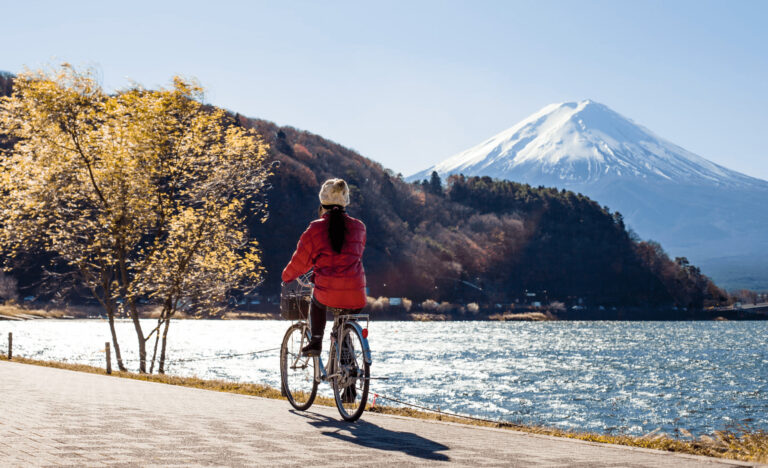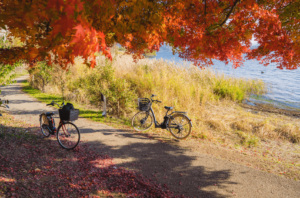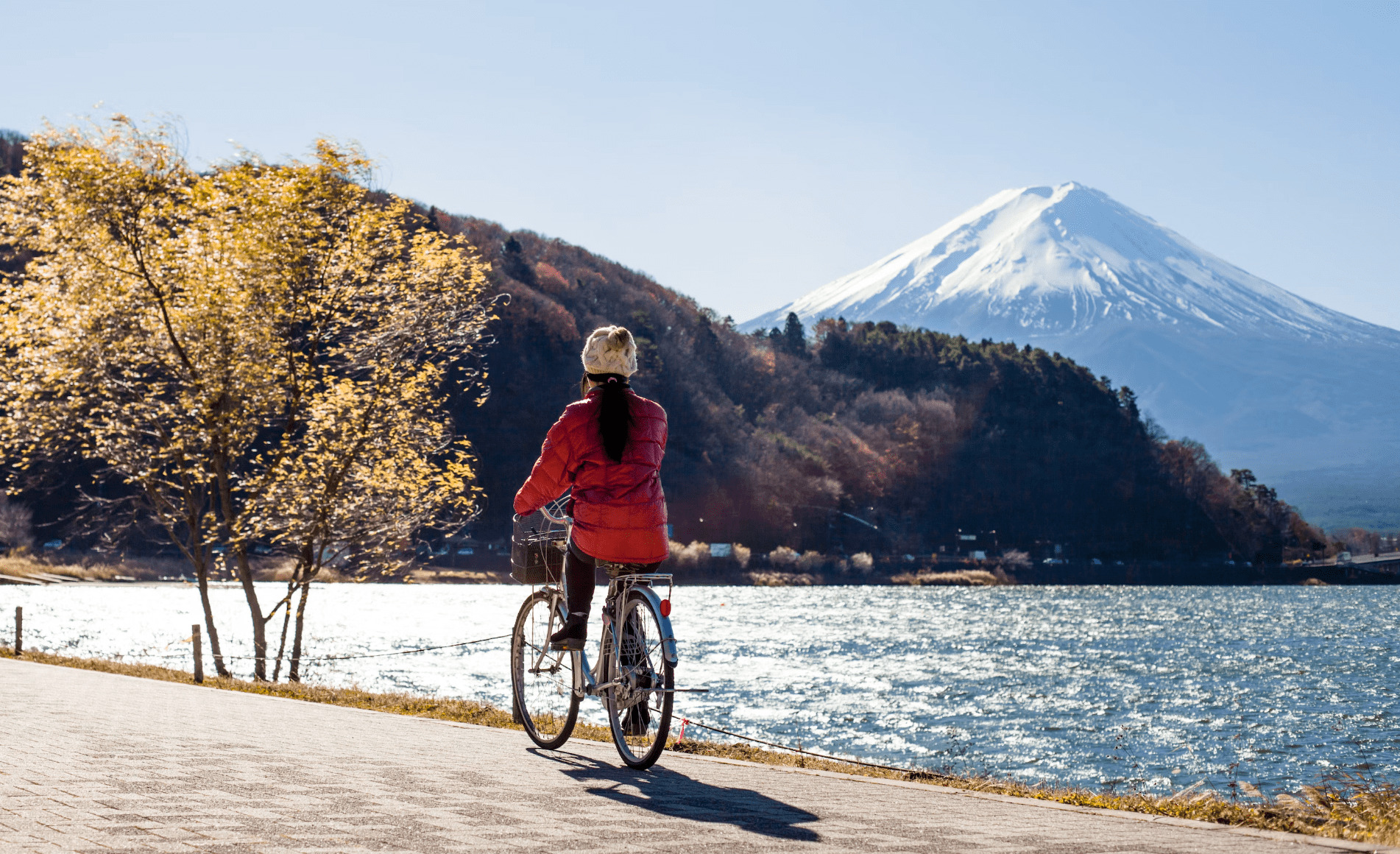

How to Enjoy Cycling in Japan?
How to cycle safely and legally in Japan? If you’re looking for a fun and eco-friendly way to explore Japan, cycling is worth considering. There are so many beautiful landscapes and attractions to discover on two wheels, from the lively streets of Tokyo to the peaceful temples of Kyoto and the scenic countryside of Hokkaido. However, it’s essential to know that bicycles in Japan are classified as vehicles and have to follow the same traffic laws as cars. But don’t worry; we’re here to help you understand the basic Japanese cycling rules and enjoy your ride safely and legally.
The Basics of Cycling in Japan
Before you set off on your bike and hit the road in Japan, there are some indispensable things you need to consider and take care of. These include:
- Registering your bike. Every bike in Japan must be registered with the local authorities and bear a registration sticker on the frame. It is to deter theft and facilitate identification of the owner in case of an accident. You can register your bike at the store where you bought or rented it or at a nearby police station. The registration fee usually amounts to 500 yen (please still inquire about your current location), and you must complete a form with your name, address, and phone number. You may also need to show your passport or residence card if you are a foreigner. If you move or sell your bike, you must update or transfer your registration accordingly.
- Equipping yourself properly. In Japan, all bikes must have a functional front light, a rear reflector, and a bell or a horn. These are legally required, and you may incur a fine if you don’t have them. Depending on your needs and preferences, you may also want to bring other gear, such as a helmet, a lock, a basket, or a rear seat.
- Selecting a suitable route. As a rule, cyclists in Japan should ride on the left side of the road, following the same direction as the traffic. For your safety and the safety of others, please use bike lanes or paths whenever possible. Avoid riding on sidewalks or pedestrian areas unless signs say it’s okay.
However, this rule has some exceptions, such as children under 13, seniors over 70, or individuals with disabilities who can ride on sidewalks. Be cautious when cycling on narrow or busy roads, and yield to cars and pedestrians as needed.

The Dos and Don’ts of Cycling in Japan
When you’re all set to go cycling in Japan, there are specific guidelines you should keep in mind to ensure a safe and enjoyable ride.
- First and foremost, you must abide by traffic signals and signs, just as you would while driving a car. Following the rules of the road means you should stop at red lights and yield at stop signs. You can use hand signals to communicate your intentions to other drivers and pedestrians. Additionally, when approaching intersections, stick to the left-hand side, give way to the right, and use crosswalks to cross the street.
- It’s also essential to avoid cycling under the influence of alcohol or drugs, as this is considered a severe offense in Japan and can result in significant penalties. Similarly, it’s best to avoid riding while distracted by your phone, headphones, or umbrella, which can impair your vision or concentration and increase the risk of accidents.
- Cyclists in Japan should prioritize safety and be respectful of other road users. It means riding moderately, maintaining a safe distance from other vehicles and pedestrians, and being alert to potential hazards such as cars, buses, trucks, motorcycles, scooters, and other cyclists. Additionally, try to be respectful and polite to other road users, using your bell or horn to warn them of your presence or apologize for any inconvenience.
- Finally, park your bike responsibly in designated parking areas such as bike racks, stands, or lockers. Always lock your bike securely and remove any valuables to prevent theft. Avoid parking your bike on sidewalks or areas that may obstruct traffic or pedestrians, as this can result in fines or having your bike towed away. By following these tips and guidelines, you can appreciate a secure and satisfying cycling experience in Japan.
The Benefits and Challenges of Cycling in Japan
Cycling in Japan is a beautiful way to immerse yourself in the country’s stunning scenery, rich culture, and unique lifestyle.
- You can uncover hidden treasures, meet locals, and experience the changing seasons.
- Furthermore, cycling is an excellent way to boost your health, allowing you to exercise, unwind, and uplift your mood.
- Additionally, it’s environmentally friendly, helping you reduce your carbon footprint, conserve energy, and prevent pollution.
However, cycling in Japan can also;
- Present challenges such as finding the right bike, registering it, and keeping it in good condition.
- You may also encounter some risks, such as getting lost, having an accident, or getting a flat tire.
- Furthermore, finding a parking spot, carrying your luggage, or dealing with the weather can be tricky, and you may require assistance.
Conclusion:
Exploring Japan on two wheels is an exhilarating adventure that promises to leave you breathless! Observe the regulations of the road, stay safe and legal, and you’ll be rewarded with an unforgettable journey through this diverse and stunning country. Japan is beautiful, and cycling is the perfect way to immerse yourself in its wonders. So, what are you waiting for? Strap on your helmet, hop on your bike, and let’s hit the road!
I hope this article has helped you. If you have any questions or comments, feel free to leave them below. Thanks for reading, and I’ll see you at the next one.




